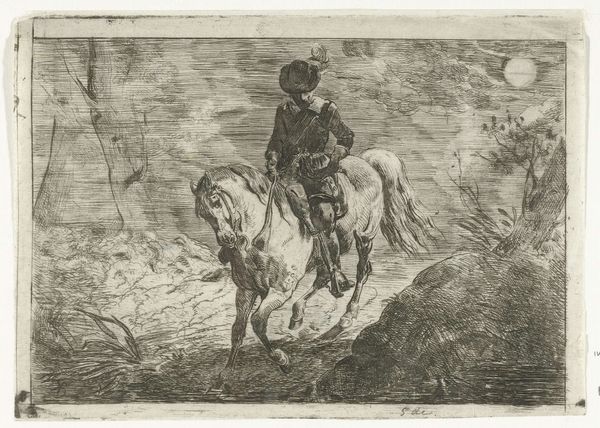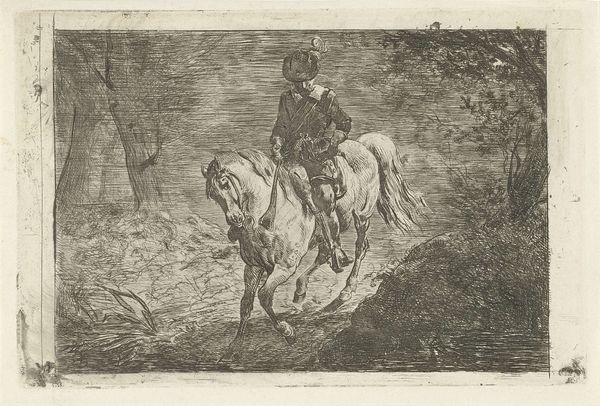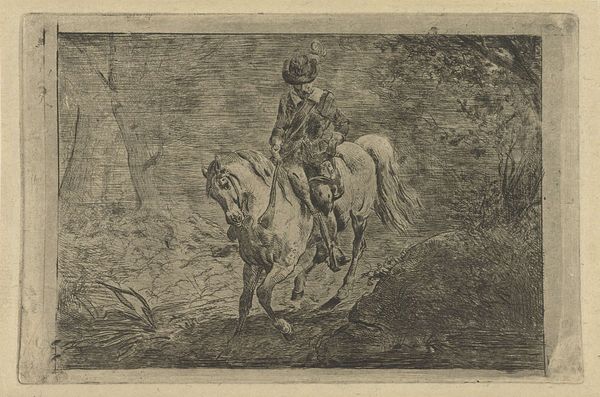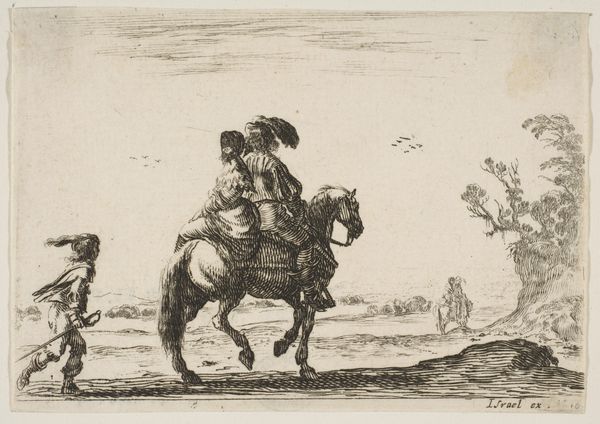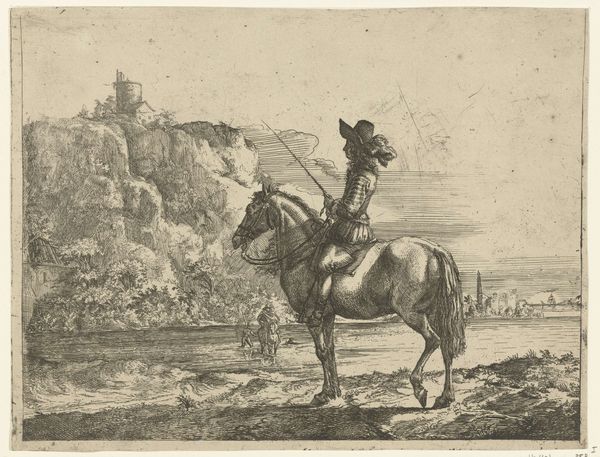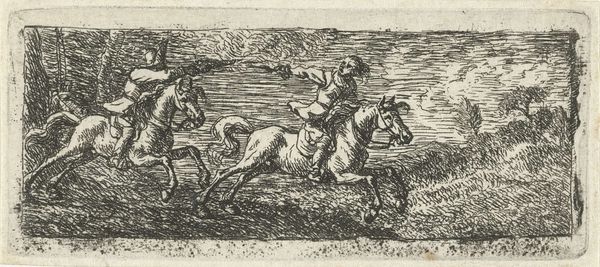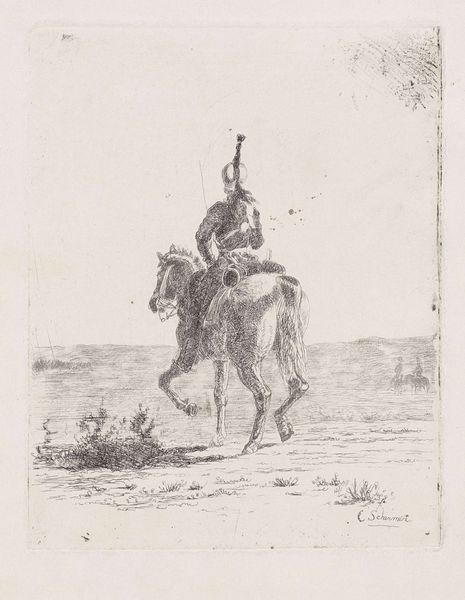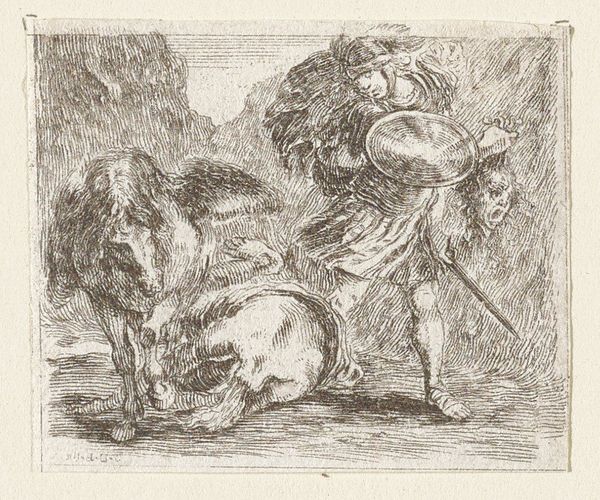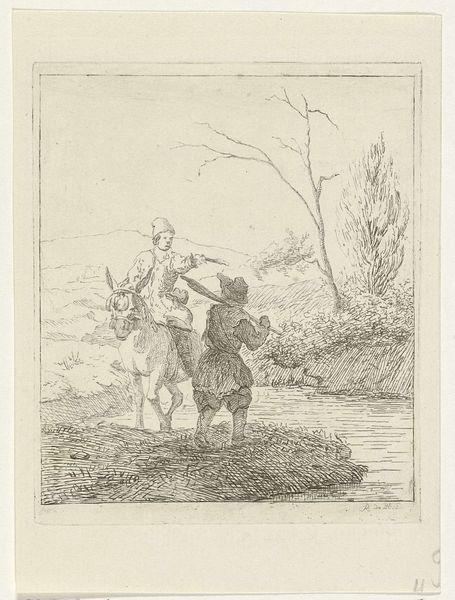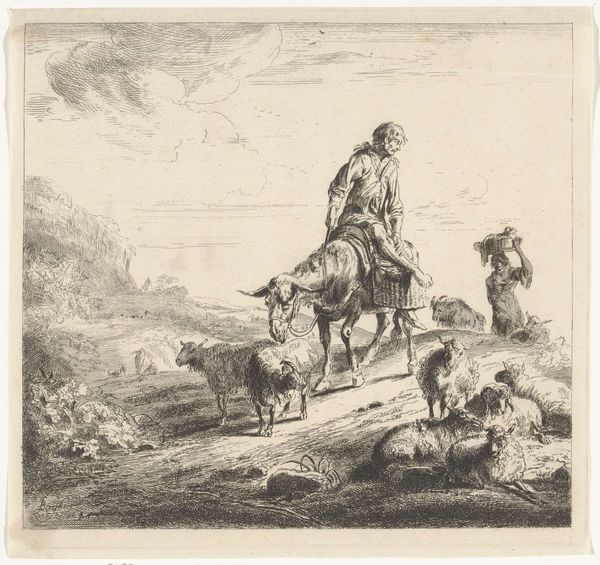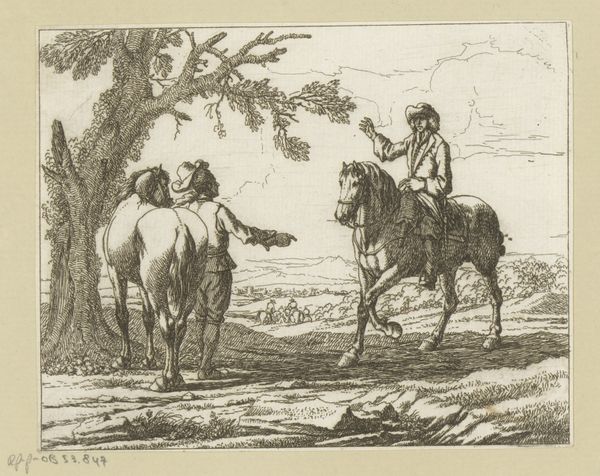
drawing, print, etching, ink
portrait
drawing
etching
landscape
ink
genre-painting
Dimensions: height 125 mm, width 188 mm
Copyright: Rijks Museum: Open Domain
Curator: Immediately, I am struck by the sense of journey, and perhaps, solitude. Editor: Indeed. Here we have Karel Frederik Bombled's "Ruiter," created sometime between 1832 and 1902. It is a work rendered in etching, ink, and drawing, classified within prints and drawings. Curator: The etching technique is fascinating. Notice the varied densities of the lines; some areas like the rider’s garb and the foreground earth, are dense and dark. These contrasting areas pull my focus across the piece. The lines used to suggest light around the full moon is less successful, creating a strange contrast of techniques in one small area. Editor: Beyond the immediate composition, we must consider this within a historical context. Bombled worked during a period where romanticism and realism intersected, heavily influencing genre painting. This piece could perhaps depict a longing for adventure. What sort of figure do you envision, occupying that horse? Curator: Perhaps an explorer, but with a touch of melancholy, suggested through the subtle yet definite use of chiaroscuro and through the overall lack of movement in the subject’s figure itself. Notice how still he is, almost pensive. He almost merges into that darker contour just behind him. The subject's static state contrasts heavily with the landscape around him, contributing to the picture's overall mood. The scene lacks an explicit narrative, so one projects their own upon it. Editor: Right, its strength may lie in how it captures a transient, but archetypal figure navigating their landscape. One wonders if it mirrors social shifts or personal narratives of movement. The rider is distinct from, but undeniably of, the Dutch landscape and artistic trends of the time. The rider embodies his position. Curator: Yes, I see the merit in looking to the societal context of the time. As a purely aesthetic experience, "Ruiter" serves as a powerful statement, achieved through very disciplined use of its simple material. Editor: It's rewarding to think about artwork that persists beyond just its formal elements—prompting historical and social interpretation as well. Curator: A satisfying image, with lines of inquiry for many to appreciate!
Comments
No comments
Be the first to comment and join the conversation on the ultimate creative platform.
